Maine’s Decadent Coast: Art, seafood and witches brew up an inviting corner of America

BOOTHBAY HARBOR, Maine — One of the reasons I travel, besides self-loathing insecurity in college, was my family’s bookshelves. Our back room in Eugene, Ore., was lined with National Geographic magazines dating back to the 1950s. I’d pick one and transport myself to the wilds of Papua New Guinea, an island in French Polynesia or a museum in Rome.
One day I ran across a story on the Maine Coast. I never thought much about Maine. Other than it being the far northeast corner of the U.S., I figured it was populated by lumberjacks firing slap shots from the wing and lobsters on city councils. I immediately recognized Maine natives when they mangled the name of their prize resort town of Bar Harbor into “Bah Hawbah.” My own naivete is usually an indication that it’s something I must explore. I read on. It told of quaint harbor towns, isolated islands, an artsy populace and lobsters. Lots of lobsters. The Maine Coast became one of the few American destinations on a bucket list the length of the Eiffel Tower.
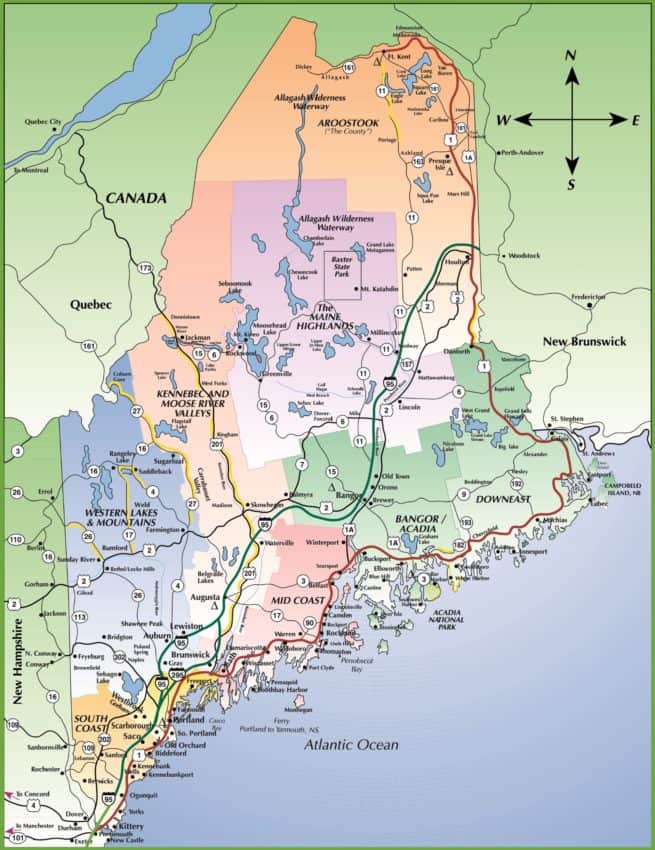
More than 40 years later, I finally made it last week. My girlfriend, Marina, had visited the U.S. four times but never New England; I’d never been to small towns on the Maine Coast. With Norwegian Airlines’ bargain-basement 500-euro round trip ticket from Rome to Providence, R.I., (an unheard of price from Rome in August), it was a tailor-made for her August break.
We started in Portland, Maine’s major city, where we met my good friend, Hal, a fellow refugee from the Las Vegas Review-Journal in the ‘80s. We both survived a string of cretinous sports editors and a skinflint publisher to blossom elsewhere. He returned to his hometown of Portland where he is looking toward approaching retirement like a fisherman seeing shore. Hal is a true Mainer. He didn’t pronounce his first “R” until he was 28. Like most of Maine, which has voted Democrat in every presidential election since 1992, he has a liberal bent. He said the state is carried politically by Portland, No. 2-city Bangor and the nature-loving, arts-driven towns along the coast. It gets more conservative the farther north you go.
“The far north is Alabama,” Hal said.
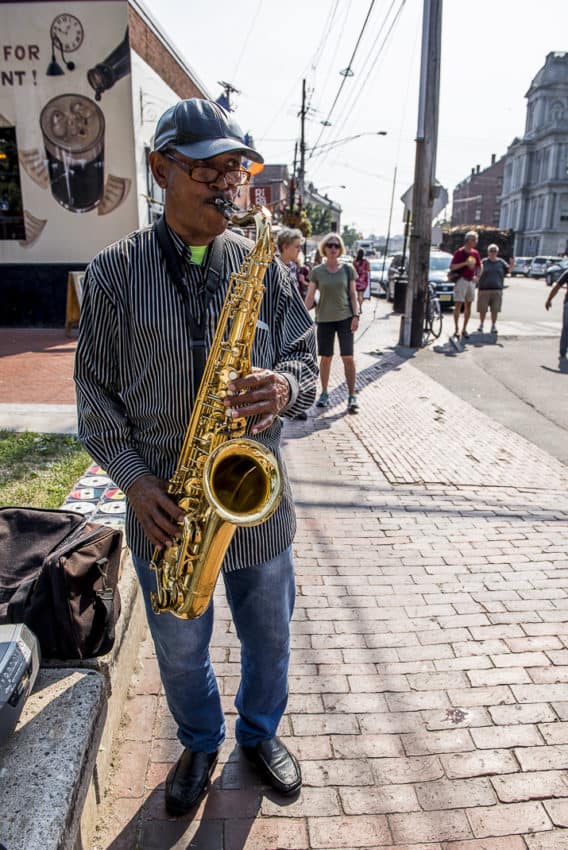
He met us in Portland’s Old Harbor. It’s a huge stretch of inner-city portages that hasn’t lost its charm by its size. Big ferry boats and weathered fishing boats dock in the big harbor. Restaurants serving up lobster rolls and clam chowder line the docks, all overlooking a cobalt blue Atlantic Ocean. The smell of fish and salt and soup filled the warm air. Souvenir shops that were once rough-and-tumble fisherman bars are on nearly every corner. One sports a sign reading, “The lobster you’re eating now was sleeping on the bottom of Casco Bay today.”
I’d visited Hal before. That was two years ago in February when all of Portland was blanketed in snow and the temperature was in the high 20s. Its famed Portland Head Light, the oldest of Maine’s 52 working lighthouses, looked ready to guide Russian icebreakers.
Last week it was in the high 70s, marking Maine as one of the few places on earth comfortable to visit in August. The sky was the color of the South Pacific. Seagulls happily flew overhead, singing loud and sweet. Tourists were everywhere.
As we stood waiting for our ferry to my first Maine island, Hal talked about Maine’s political scene. I had trepidation about visiting the U.S. It was my first visit since the November presidential election sent my country and planet tailspinning into inevitable doom. I didn’t know how I’d react if I met a supporter of the Cheeto-faced cumsicle we elected. I promised Marina I wouldn’t get into any bar fights. The best way to avoid it is go against one of my tenants for travel: I would not talk to locals.
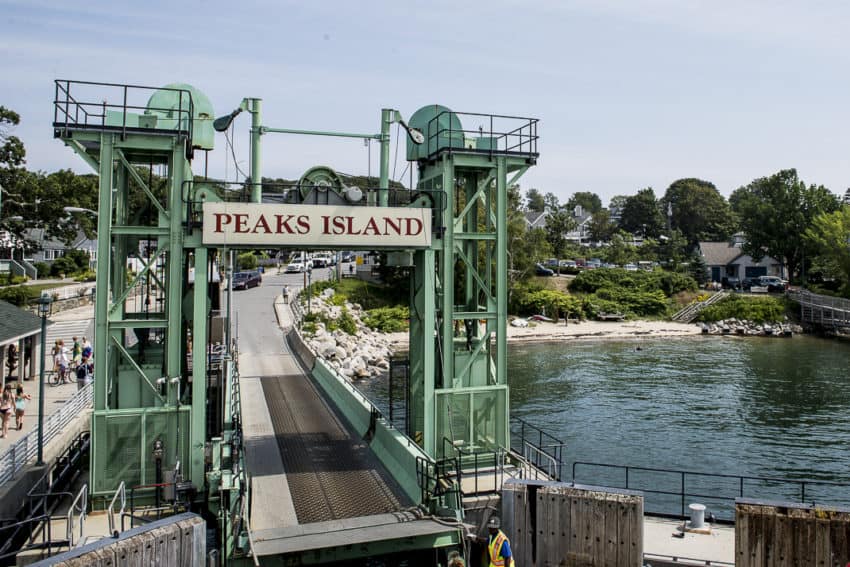
I shouldn’t have worried. In Maine I’m safe. Hal said Maine has a liberal soul but recently developed a conservative voice. The governor is Paul LePage, a small-town redneck who catapulted into the governor’s chair from his mayor’s job in Waterville, Maine. He made the biggest tax cuts in Maine’s history and disparaging remarks about minorities, gays and abortion among other liberal hot points.
Sound familiar?
“He calls Portland ‘The People’s Republic of Portland,’” Hal said with a proud smile.
This area we were exploring goes by another name: the Decadent Coast. It’s where artists and environmentalists, retirees and young couples tired of the city, gather to carve out a life where free thinking is the only thought worth having. If I’m going to spend 10 days in a country that has never been more divided in my lifetime, the Decadent Coast is my kinda place.
Peaks Island is one of 4,600 islands listing a Maine address. Along the 20-minute ferry ride, we passed what looked like a flooded fort.
“It’s our Civil War fort,” Hal said. “It was half completed and then the war ended.”
Peaks Island is one of the idyllic islands I may have seen in National Geographic. Its tiny two-lane main road meanders along the coastline dotted with big houses with sweeping verandas. People cruised by on bicycles and golf carts with not a tee box in sight. Lycra-clad yuppies on expensive bikes waited for ferries talked of staining their wood houses. Pampered dogs panted happily.

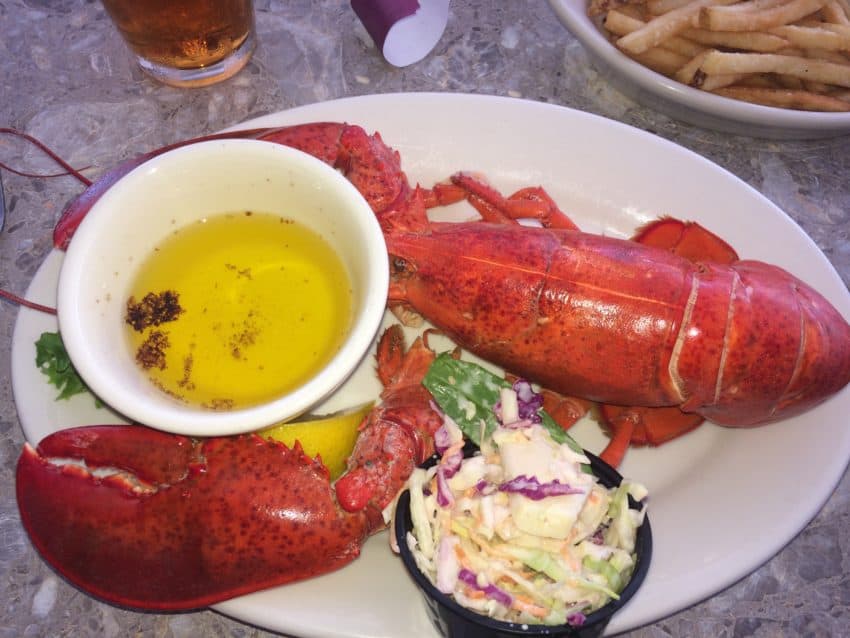
We sat for lunch at The Inn on Peaks Island, which occupies the bottom floor of a huge gray townhouse with a roomy dining porch. For months I had raved to Marina about Maine lobster. Last year Maine fishermen caught 130 million pounds of lobster worth a cool $533 million. More than 4,000 miles is a long way to get disappointed. She wasn’t. The lobster brought to our table filled the length of the plate and was as meaty and juicy as any in the world. The best part? Where else can you get two lobsters with salad and a large sandwich, plus beer for $70? In Rome you’d need a lobster loan.
On the drive north, Marina discovered one of the factors in America’s massive (pun intended) obesity problem. I don’t remember going 15 minutes without passing a Dunkin Donuts. It makes the near libelous claim of having “America’s greatest coffee.” Marina ordered a cappuccino and nearly needed a crane to lift the grotesque paper cup to her lips. Dunkin Donuts does, however, have fantastic donuts. Covered in chocolate and white icing and chocolate bits or chocolate glaze, they are as addictive as crack cocaine and nearly as dangerous. I tried explaining to Marina that when I lived in Denver donuts were the perfect hangover cure. Unfortunately, Italians drink so little the Italian language doesn’t even have a word for “hangover.” Marina looked at me savoring a speckled chocolate glaze with the same curiosity as someone watching a hippo eat in a zoo.
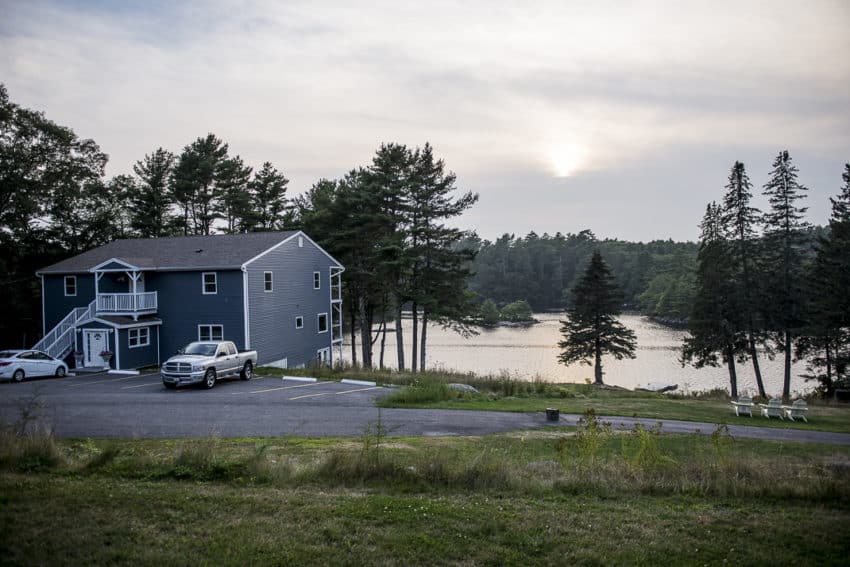
Our base for our Maine exploration was Boothbay Harbor, a village of about 2,000 people wedged in between two rivers flowing slowly into the Atlantic. It served as a fishing camp for the English in the 17th century and remained a fishing center through the 19th century. At one time, its vast harbor held up to 500 ships. Today, tourism has overtaken fishing as its bell cow. Its twisty, narrow, one-way streets above the still charming harbor attract visitors from around the state. Bar Harbor, spoiled long ago, gets more of the national mob.
We took one of Maine’s many bed & breakfasts and got a big break when we checked into the Beach Cove Waterfront Inn. A family had cancelled that morning and for another $10 a night we were upgraded to an executive king suite. It had a huge deck overlooking a peaceful inlet at the base of a forest. We stood on the deck and watched the sun glistening off the meandering river. A dog chased a ball into the water. Seagulls chirped above. The sun set just behind the pine trees as the temperature dipped to 70, which felt like a cloudburst in a desert after Rome’s sweltering summer. I took my novel to read but it remained overturned on my lap. I just wanted to look.
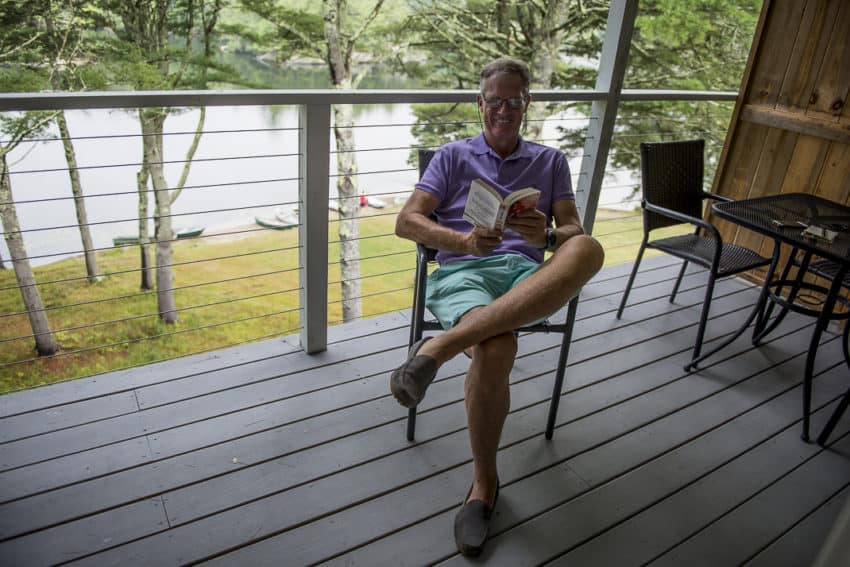
The suite’s bed was about a $5 cab ride to the bathroom. Complete with swimming pool and a breakfast featuring fresh blueberry muffins, fruit and frosted cinnamon rolls, we were in New England heaven. Not that Marina was happy but I heard her say “Boothbay Hawbah.”
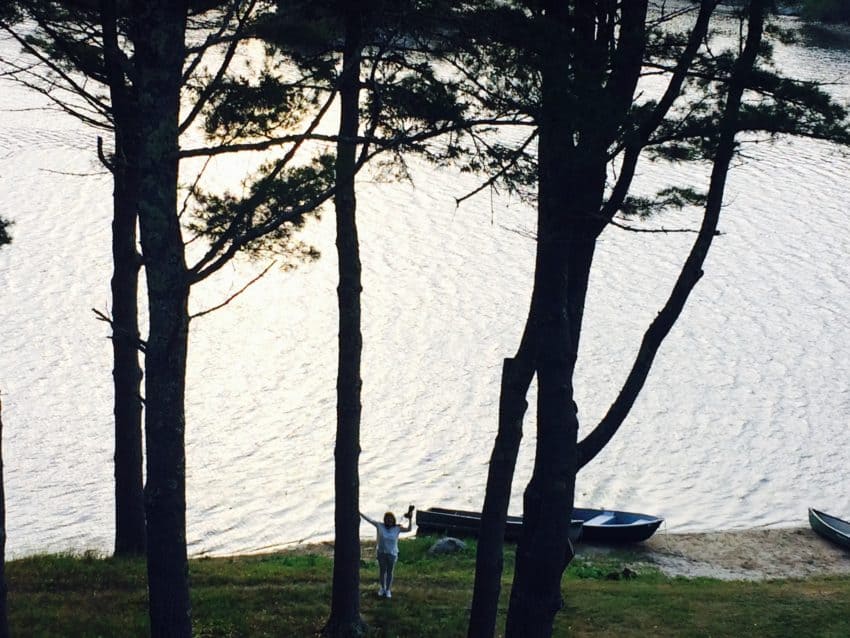
Our next road trip was an exploration of all the cute Maine coastal villages I read about as a kid. However, before leaving Boothbay Harbor city limits, a public market rubbernecked us onto its grass lot. We wandered around sampling homemade maple syrup, local cheddar cheese, grass-fed beef jerky and fruity jams. Locals chatted about upcoming arts fairs and the weather. It’s a slice of Americana Marina never saw in her Italian textbooks.
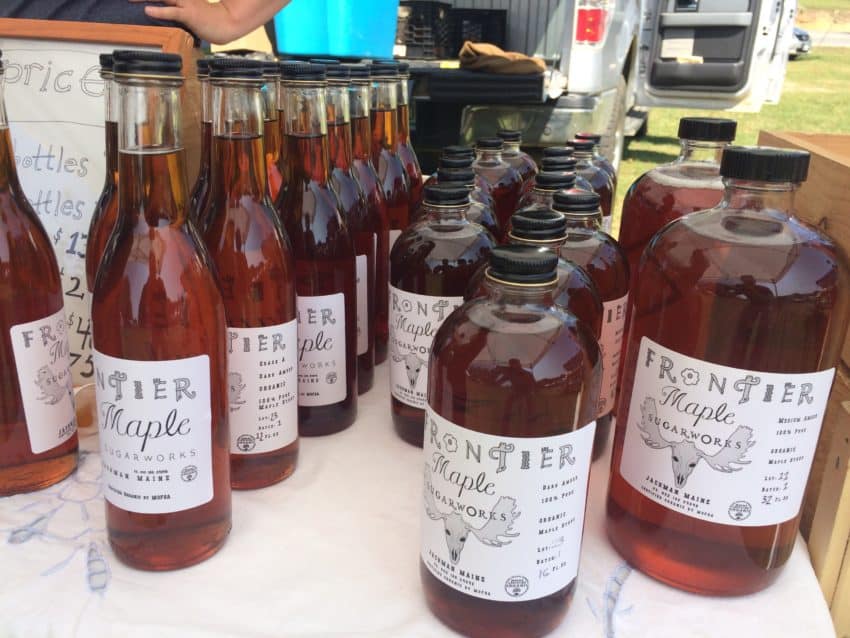
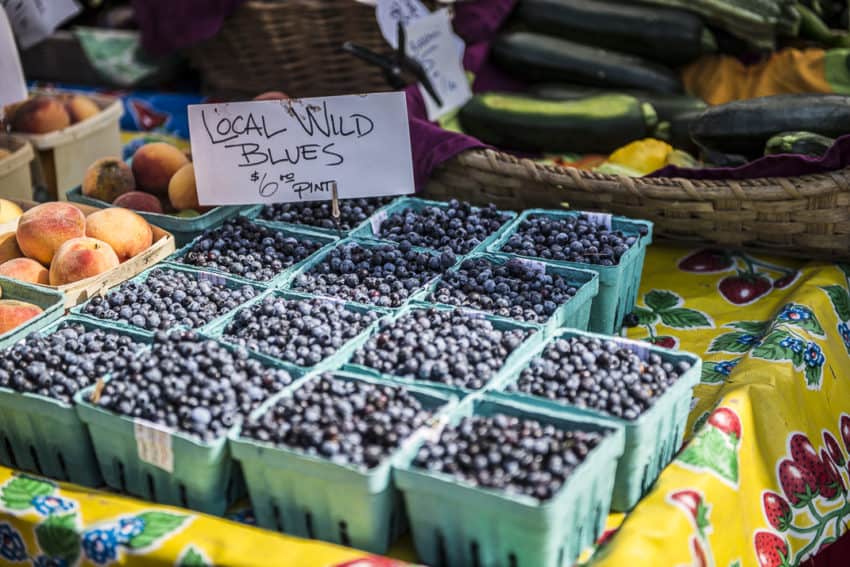
The drive up Maine’s Highway 1 (Marina: “Does every state have a Highway 1?”) is an environmentalist’s dream. A thick forest separated us from the crystal clear Atlantic. The small towns had as many dinosaurs as it had litter. Small blueberry stands lined the highway, reminding me that Maine produces 25 percent of the world’s blueberries and 90 percent of the wild ones.
Our first stop was Rockland, a community of about 7,000, seemingly half with a paintbrush and art studio at home. We stopped at a store called The Flower Goddess, a combination flower shop and art store. Co-owner Mark Anderson is from Long Island but has lived here 40 years and chatted with me about his personal paradise while Marina perused the collection of colored beads for her trollbeads bracelet.
“I would never live anywhere else,” Anderson said.
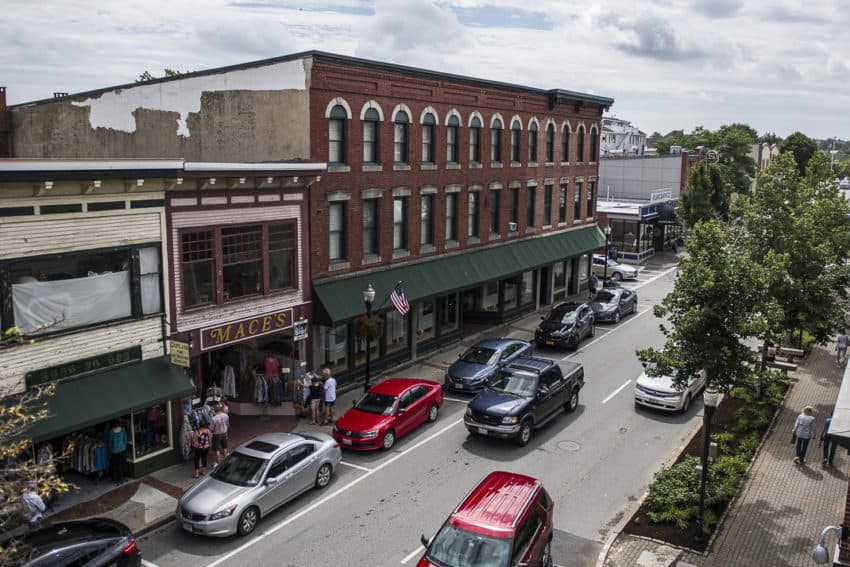
Tan, fit with thinning hair, Anderson calls Rockland “the arts capital of Maine” and it has attracted so many artists, “there are too many to count.” The Harbor Square Gallery has pieces such as a sculpture of the top half of a hippo for a cool $26,000. The nearby Farnsworth Art Museum is considered one of the top regional museums in the country.
Rockland is a friendly happy town that drops to about 2,000 inhabitants during the off season. Anderson never locks his home. He never locks his car. In fact, it stood outside the shop with the keys in the ignition.
“Why not?” he said. “That way I always know where they are.”
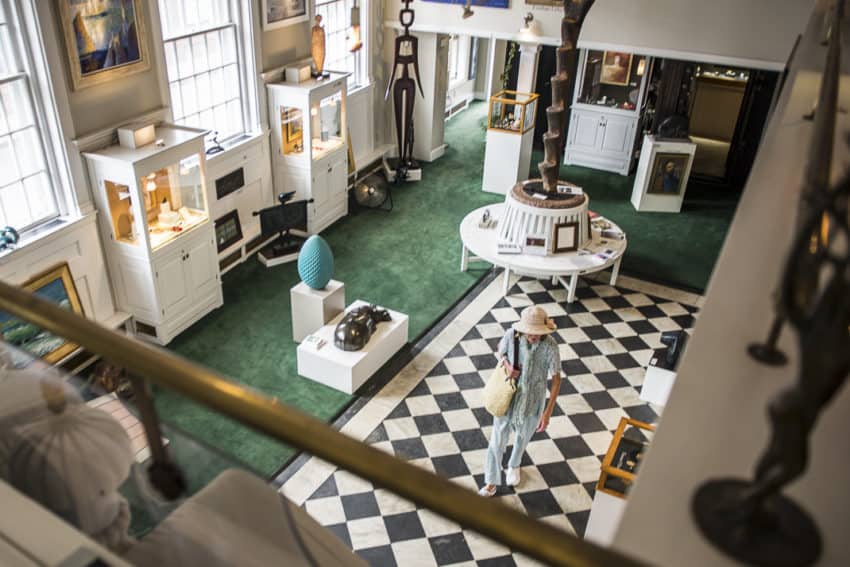
I asked about their wide, round candles. They seemed odd in an arts and flowers store. Not in Maine. New England has an eerie history, not just of revolution but of witchcraft. Salem, Mass., just 175 miles to the south, was the site of the famed witch trials of 1692 when 156 people were accused of witchcraft and many burned at the stake. While most were probably innocent, Anderson said witchcraft is still practiced in this part of Maine, putting the “decadent” in Decadent Coast. The place has a healthy dose of pagan population. The candles are spell candles to inspire feelings ranging from evil to stimulation. He also carries tarot cards and crystals, minerals capable of amplifying vibrational energy. I saw dreamcatchers, looped ornaments designed to fend off bad dreams.
I asked him if he has eye of newt.
“No, I don’t deal with perishables,” he said.
He thought I was serious.
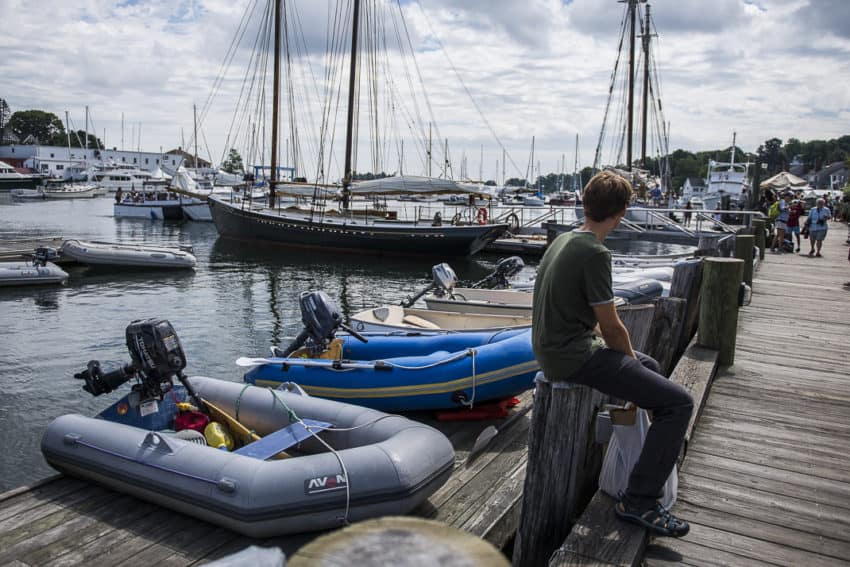
Continuing north, we stopped in Camden, a former shipbuilding town that has the prettiest harbor in Maine. Long and broad, it’s lined with everything from motorized dinghies, to motor boats to tall, majestic windjammers. It’s all set in front of mountains of the Camden Hills State Park, so inspiring I wanted to drop my pad and pen for an easel and brush. Tourists sat under umbrellas along the harbor waiting for harbor cruises.
Marina panned her eyes along the water and towering boat masts and said, “No Italians come here.”
We later took a seat at the Seadog Brewing Company. Maine’s beer scene, befit a population with artsy tastes, has been booming for years. My fellow journalist, Kate Cone, even wrote a second book about Maine beer last year called “What’s Brewing in New England: A Guide to Brewpubs and Craft Breweries.” Every pub has a different local beer they boast and each one seemed to be better than the last. I had something called a Sea Dog Pale Ale. Ice cold, unlike some beers you get in Rome, it went perfect with my blueberry salad.
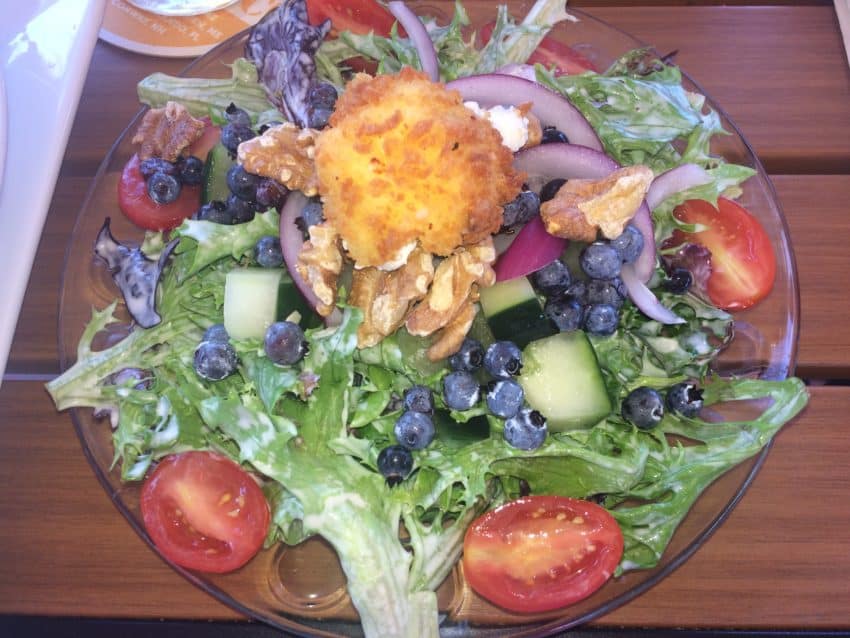
A note about the food in Maine: It’s more than Dunkin Donuts and lobster — (although that combination would be great for a hangover). The environmentalists and artists live healthy and eat healthy. The menus are dotted with seafood. Over three days we had stuffed amberjack, clam chowder, seafood chowder, smoked salmon and haddock. Combined with the lobster roll I had when we started the trip in Boston, if I had anymore seafood I’d meow.
We finished the day in Belfast where the working-class vibe and down-home eateries transport you back to Maine in the ‘60s. The shipbuilding plant the size of an airplane hangar housed a yacht that could comfortably fit the Maine Coast Guard. We walked along the harbor and rested on a grassy knoll where a young woman sunbathed and a man slept. An old man sat sunning himself with his feet on the rock wall.

While working class, Belfast maintains the same unwavering optimism and cheery outlook the Decadent Coast has about life. Buying groceries, I saw the clerk was a teenage boy wearing a football camp shirt. I asked how good the high school football was in Maine. He thought for a minute and finally said, “It’s not the worst.”
Badly in need of exercise after way too much driving — and stopping at nearly every Dunkin Donuts — the next day we drove around the peninsula from Boothbay Harbor. On Pemaquid Point is perhaps Maine’s most moneyed lighthouse. At least, the Pemaquid Point Lighthouse is on the back of every Maine quarter. Built in 1827, leveled by the sea and rebuilt in 1835, the lighthouse itself doesn’t stand out. It’s the setting. It sits up the hill looking down at the royal blue Atlantic Ocean. Hard rocks form a comfortable walking path that lead to the shore where little pools form for wading. The temperatures were in the high 70s but the wind off the sea kept us as cool as clams before the chowder.
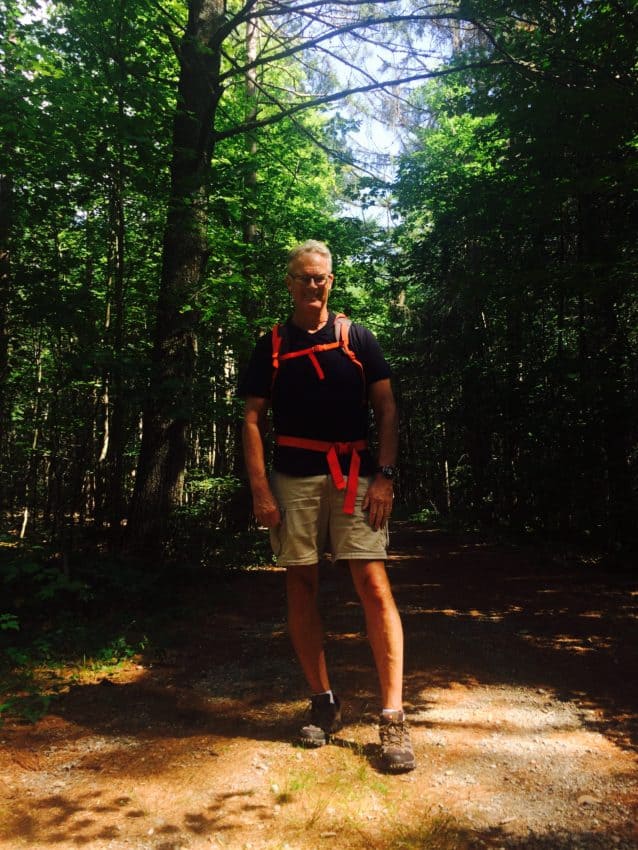
We backtracked around the peninsula and stopped at Dodge Point. It’s a network of trails snaking through a thick forest and empties out onto the Damariscotta River. It’s a leisurely, flat two-mile hike under a towering canopy where the sun breaks through the tall pines. We reached the river that was as calm as a countryside lake. We saw one lone house along the entire river. We didn’t see another person. We took off our shoes and waded in the warmest the river would be all year. In the 70s, maybe it’s not swimmable but definitely good to soak after five days in the Great Northeast.
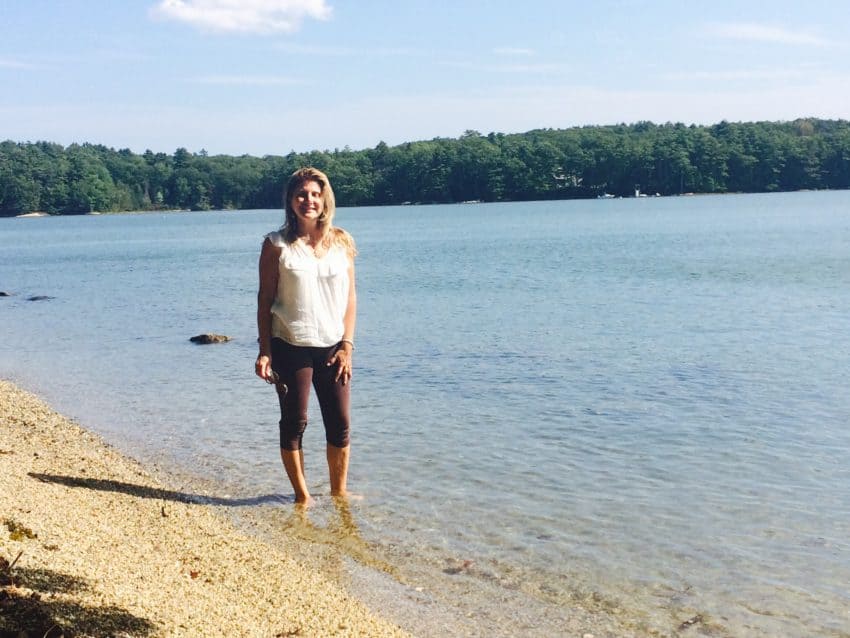
Later in our room, ESPN blasted from our big-screen TV. I hadn’t heard American sports in nearly a year. Yet news of baseball and the McGregor-Mayweather fight and even the approaching season of my favorite sport, college football, couldn’t get me to turn my head. Instead I sat on the balcony, drinking a glass of Chardonnay, watching gulls dive for fish. I could smell the sea salt from behind the pines. The sun started to fade.
With all the turmoil and anger and separation in the U.S., it’s good to come home and see America is still beautiful. It’s decadent — in all the right ways.


September 2, 2017 @ 8:21 am
John: Thank you so much for mentioning me and my book! So glad you made it to Maine. Great post. I’ll share it all over. If you are still here (it’s 9/2) we’d love to meet you and Marina for a beer. We’ll be in Verona again in January, and a week in Rome then too.
September 2, 2017 @ 8:48 am
Thanks, Kate, but we left Maine on the 25th for Newport to stay with the Blooms. I totally forgot to look you up while in Maine. Definitely look us up when you’re in Rome.
September 2, 2017 @ 8:05 pm
Great job John. I almost feel like I was there. Oh wait. Seriously, very well done.
September 3, 2017 @ 2:46 am
Thanks, Hal. You’re a great tour guide! Have fun in Vegas. And remember, what ever you do there, make sure you wash it afterward.